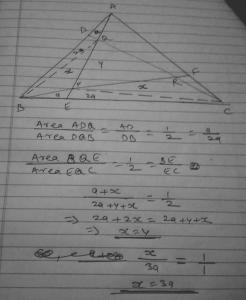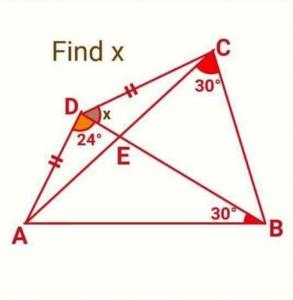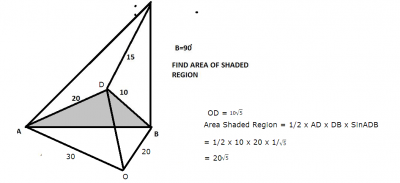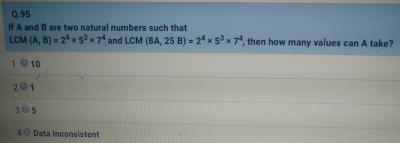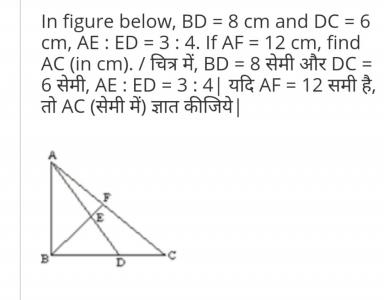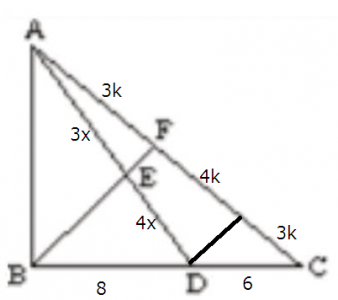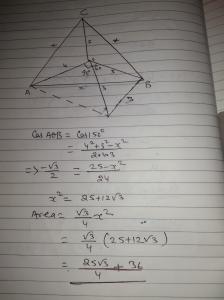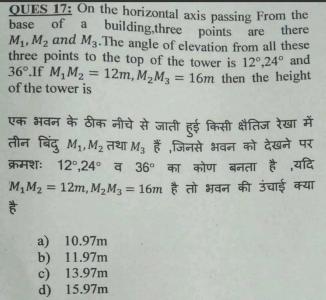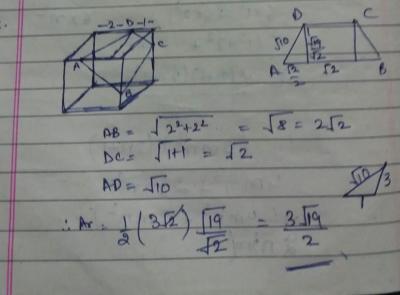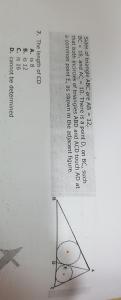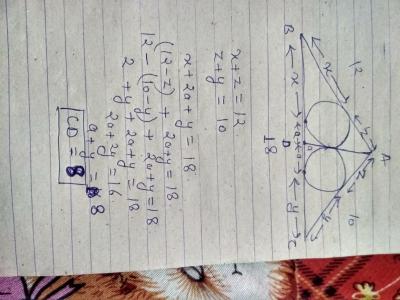The perimeter of an isoceles right triangle is 2k , what is its area ?
Let the area of a triangle T be numerically equal to its perimeter. Find the radius of the inscribed circle .
We know ,
Area of a triangle = Semiperimeter × inradius of the triangle
So , T = ( a + b + c)/2 × r
According to the question
(a + b + c) = ( a + b + c)/2 × r
r = 2 units.
ABC is a right angled triangle , right angled at B. The bisector of the external angle at A meets CB produced at D. If AC = 5 cm , BC = 4 cm , find the length of CD.
AB/AC = BD/DC [ External Angle Bisector Theorem ]
3/5 = BD/( BD + 4)
BD = 6
Hence CD = 6 +4 = 10 cm.
- Data sufficiency question
is ∆ABC an equilateral triangle?
I.the orthocentre lies outside ∆ABC
II.The circumcentre coincides with the orthocentre
The orthocentre of a triangle is the intersection of the triangle's three altitudes.
In an acute angled triangle orthocentre is inside the triangle .
In a right triangle it is on the vertex at the right angle.
In an obtused angle triangle orthocentre will always lie outside the triangle.
So using (i) we can say triangle is obtused angle triangle ( not an equilateral ) Hence (1) is sufficient.
A triangle in which any two of circumcentre , orthocentre and centroid coincide is equilateral triangle so the 2nd statement is also sufficient .
Hence , each statement is independently sufficient.
B is multiplied by 25, LCM (A,B) remains unchanged so A has 53 in its prime factorization .
When A is multiplied by 8 ,LCM (A,B) remains unchanged so B has 24 in its prime factorization .
And A can have 20 or 21 => 2 cases
for each case exponent of 7 can range from 0 to 4 in A so 5 cases
Total : 2 x 5 = 10 cases
Area of equi triangle= √3/4* a^2 --1
Also 1/2* a * (4+3+5)= 6a --2
from 1 and 2
6a= √3/4* a^2
a=8√3
therefore area=√3/4* a^2= 48√3
A, B, C, D are four points on the edges of a 3 ´ 3 ´ 3 cube which are at a distance of 1 unit from the closest vertex as shown in the figure. If a plane is passed through the points A, B, C and D, what will be the area of the cross-section formed?

Sir how do we find the height of the cross sectional isosceles trapezium in this ?
The diagram shows 78 points each at equal distance of 1 unit from its nearest points. AB and CD intersect at E. Find the area of the triangle ACE approximately in square units.


